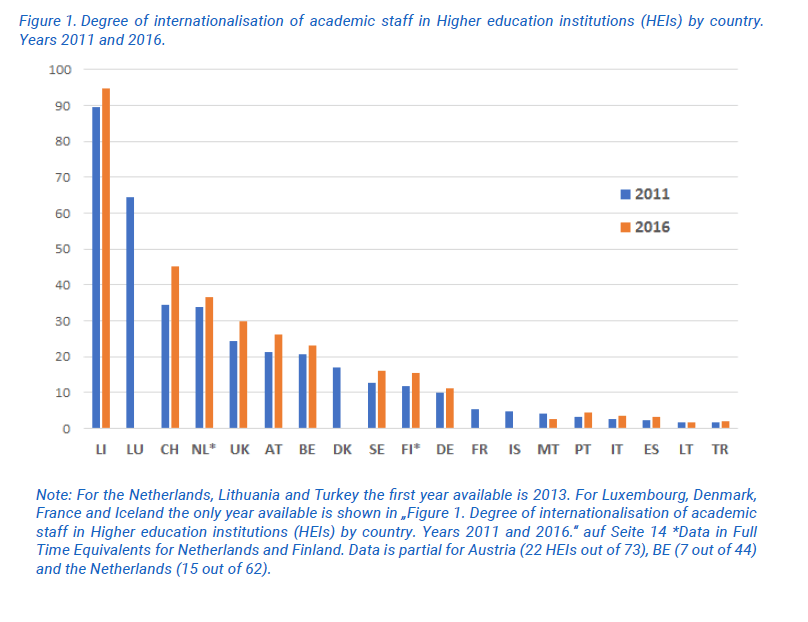Stay in the loop! Subscribe to our mailing list
European Tertiary Education Register (ETER) has published a report on the numbers and distribution of foreign academic staff at more than 1500 higher education institutions (HEIs) from 19 European countries, based on the information available in the database. The report looks into the share of foreign academic staff, the top hosting HEIs and countries by proportion of foreign academic staff, differences by type of HEI and relations between presence of foreign staff and other HEI characteristics (e.g. research/teaching-orientation, subject field, size, etc.).

Despite the overall increase in levels of foreign academic staff at European HEIs, the findings point to a clear North/West – South/East divide at country level. The share of foreign academic staff ranges from above 25% in Switzerland and the UK or even higher in very small HE systems like Liechtenstein and Luxembourg, to above 20% in Austria, Belgium/Flanders and the Netherlands, above 10% in the Nordic countries and Germany, to below this figure in Southern European countries (Malta, Italy, Spain, Portugal and Turkey).
When looking at individual HEIs, the distribution does not change significantly, with those from Switzerland, UK and the Netherlands employing the highest share of foreign staff, followed by smaller and/or very specialised institutions across Europe. From a top-50 perspective, HEIs from Southern Europe are completely absent. It is also noticeable – although not surprising - that internationalisation of academic staff is led by (top) research-intensive universities; at the same time, smaller specialised institutions (e.g. arts and humanities schools) demonstrate a comparably high level of internationalisation concerning academic staff. The medium of instruction is another factor associated with the proportion of foreign academic staff, with the share of English-taught programmes influencing the share of international academic staff.
Despite a number of methodological limitations, this is the first report of its kind in terms of systematic and comparable data analysis: it covers the 2011-2016 period and is based on a shared definition of foreign academic staff, one that takes into account their nationality and regular employment (thus, excluding short-term mobility). With the view to methodologically more robust studies in the future, the report highlights the need for (more) data from Eastern European countries as well as the collection of data that allow more sophisticated analysis.